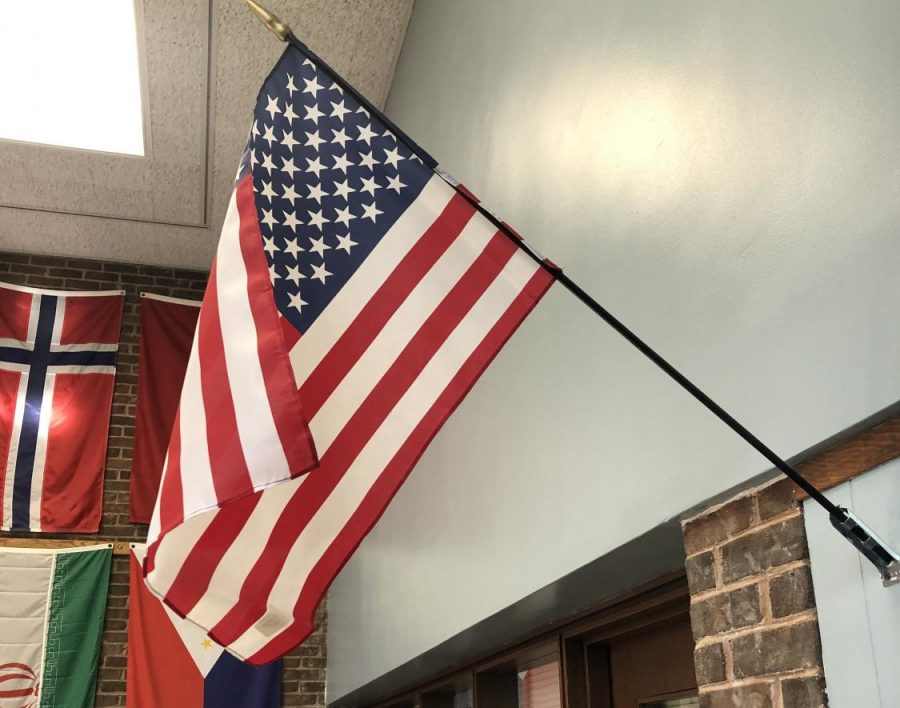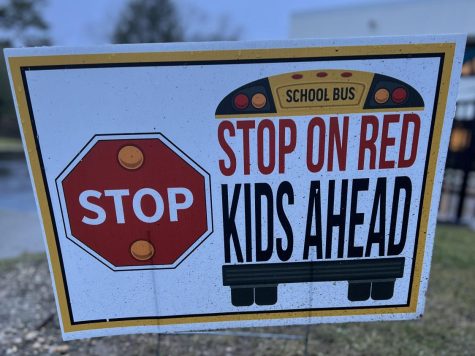The Pledge of Allegiance: To Stand or Not to Stand?
The Pledge of Allegiance is a nationally recognized symbol of American patriotism practiced in schools. These thirty-one words assert the freedom the American flag represents and show people’s loyalty towards the country when recited, but recently, some school students have decided to sit for the Pledge . For some people, sitting for the Pledge is deemed disrespectful to the country and the people living here. So, is it really right to be sitting during the pledge?
Grace McMillan, a senior at SWR high school, does stand for the Pledge . She says “I stand for the Pledge of Allegiance because when I stand, that shows I am proud to be part of this country, and that shows that I believe in justice for all people.”
McMillan takes the pledge very seriously, declaring, “I believe it is disrespectful to sit during The Pledge of Allegiance because that shows that you are not proud to be in this country, and that also shows that you do not want to show respect for veterans and current Americans who are serving for our country.” She also adds, “I would not understand why someone would think sitting during the pledge would have anything to do with things like BLM, the LGBT+ community, or certain heavy injustices. I know that some people argue that since the flag is supposed to represent justice for all, they sit because there ‘isn’t justice for all,’ however, I do not believe that sitting during a payment of respect for our country will change the way certain people feel they are treated.” McMillan says that sitting for the Pledge is disrespectful towards the people who have served this country and are serving this country. The Pledge is about patriotism and always being true to this country we all live in and wanting to be unified.
Jamie Johannessen, another senior from SWR high school, has an opposing viewpoint. Johannessen does not stand for the pledge, calling it a form of peaceful protest. She states that “I don’t think my personal sitting will make an impact on the future… I believe I do it more for my own personal beliefs.” As McMillan says that sitting for the pledge is disrespectful towards the troops and veterans, Johannessen has a different view. “I fully respect veterans and all they have done for our country, but I currently am losing respect for our government.” Even though Johannessen’s personal sitting may not affect anything in the long run, she believes sitting at a larger scale may start a movement. “The systemic racism in this country is something that is ingrained in our culture and I believe that it needs to be brought to light if we would like to have a unified America.”
Even though these two students have opposing views on why or why not students should stand for the Pledge, there is a common ground between the both sides. McMillan says, “I don’t think students should be required to stand for the Pledge of Allegiance, but I believe everyone should want to stand for the Pledge of Allegiance.” Johannessen also agreed and answered, “Students should have the right to choose whether they sit or stand for the Pledge because under our First Amendment rights we are allowed to peacefully protest.” Even if both sides don’t seem to agree with each other, it is agreed upon that under the First Amendment, students have the right to choose whether or not they stand for the Pledge during the school day.






